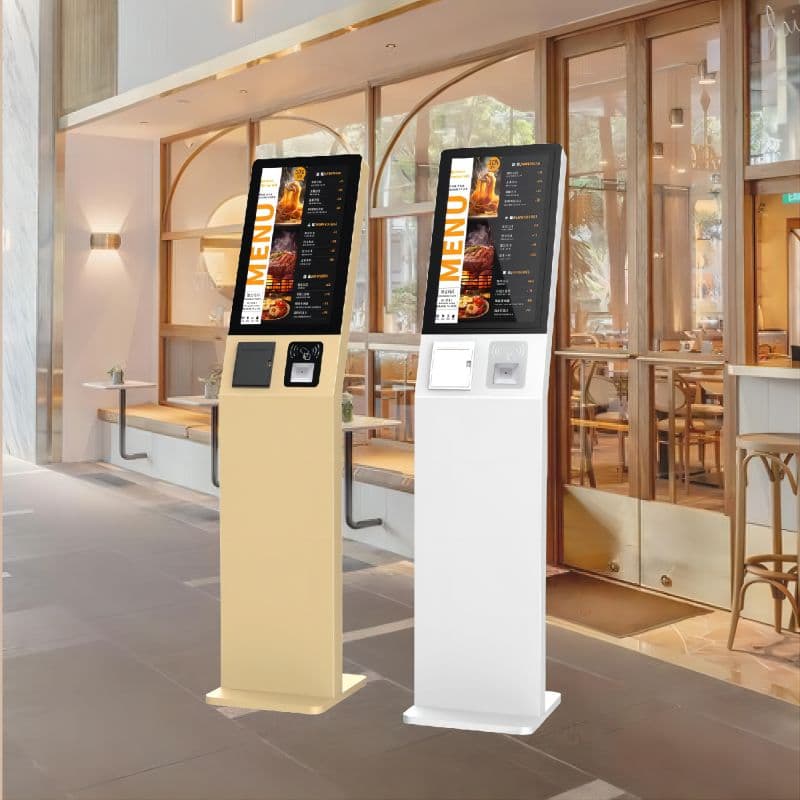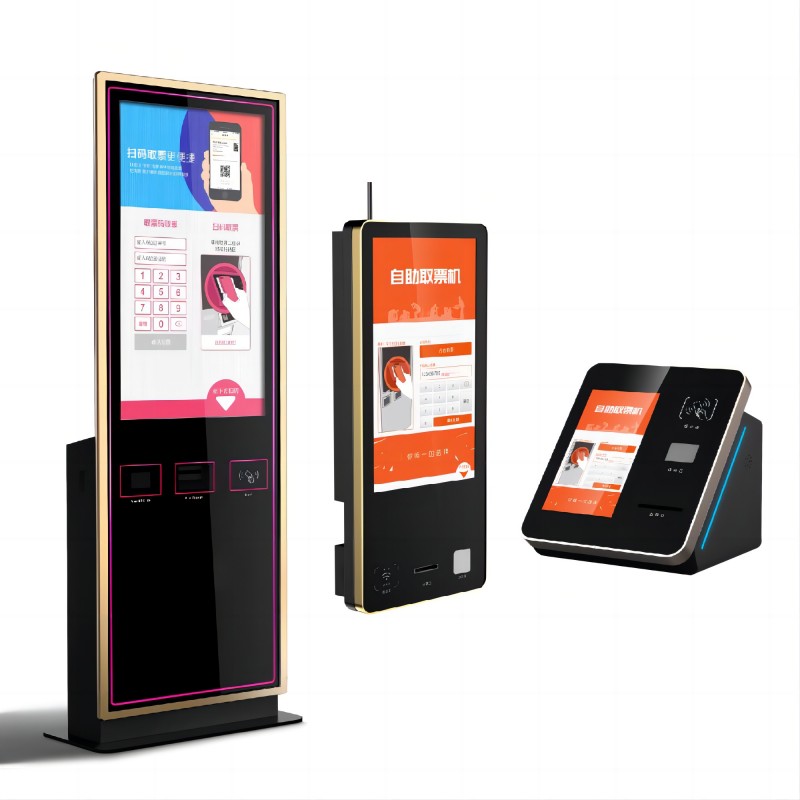Looking for a cinema kiosk? The movie theater industry has witnessed a profound transformation in recent years, driven by the integration of cinema kiosk. These kiosks have played a pivotal role in enhancing the overall customer experience by offering innovative self-service solutions. From purchasing tickets to ordering concessions and checking showtimes, cinema kiosks have redefined how moviegoers interact with theaters. In this article, we’ll explore what is kiosk in cinema, the different types available of cinema kiosk, their benefits, and how they are revolutionizing the movie theater experience.
What is kiosk in Cinema?
A cinema kiosk is a self-service machine designed specifically for use in movie theaters to streamline various processes, such as ticket purchasing and concession ordering. These kiosks feature intuitive touchscreen(17-32 inch) interfaces and secure payment options, allowing users to complete transactions independently, reducing the need for human assistance. They are often integrated with mobile apps, enabling users to make reservations, check seat availability, or even pre-order snacks.
The technology behind cinema kiosks leverages advanced software systems to provide real-time information to both customers and cinema operators. By connecting to cinema management systems, these kiosks display up-to-date showtimes, ticket availability, and promotional offers, ensuring a smooth and efficient user experience.
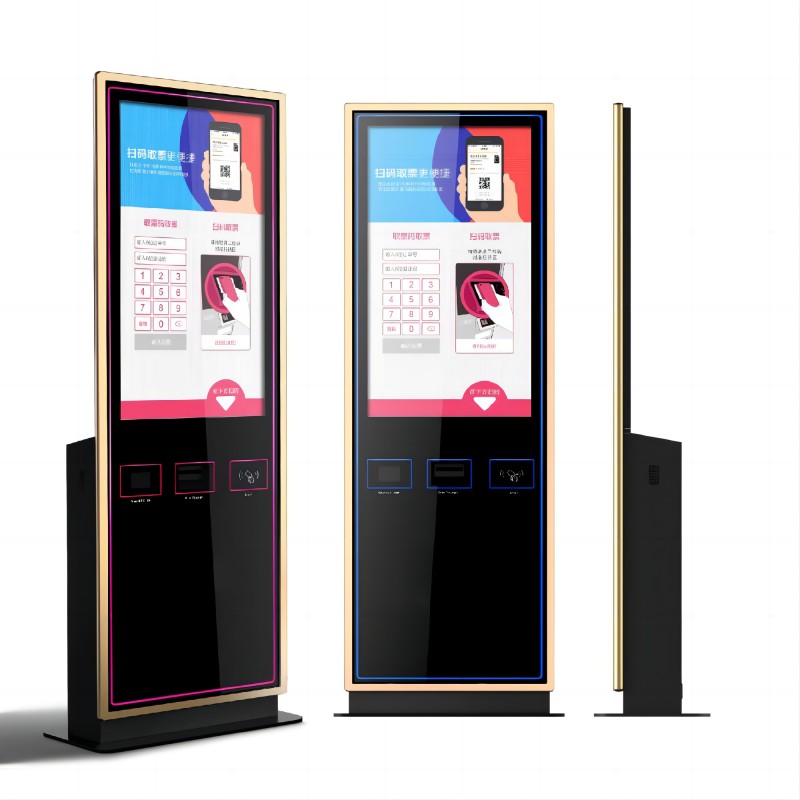
Standard hardware for a cinema kiosk at LKS
Cinema kiosk made from LKS is hgih quality, the following is the detailed hardwares of our cinema kiosk
| Components | Details |
| PC system | Industrial Board | Seavo/ Gigabyte/Advantech AIMB 562 |
| CPU | Dual core E5700/G2020, 2.8ghz; Intel Dual Core I3/I5/I7 |
| RAM | 2GB /4 GB / 8GB |
| HDD | 500G |
| Interface | 6 RS-232 Ports;1 LTP;6 USB Ports,1 10/100M Net Port ;Integrated Net Card, Sound Card |
| PC Power Supply | HUNTKEY/Great Wall |
| LCD monitor | Screen Size | 17 inch/19inch ( optional from 8inch to 65inch) |
| Brightness | 250cd/m2 |
| angle | horizontal 100°above;Vertical 80°above |
| Contrast | 1000:1 |
| Backlight tube life | more than 40,000hours |
| Max. resolution | 1280×1024 |
| Touch screen | Screen Size | 17/19 inch Diagonal ( optional from 8inch to 65inch) |
| Resolution | 4096x4096 |
| High Transparence, high precision and durability,Orientation precision< 2mm(0.080 inch);pure tempered glass;Single-point touch Life expectancy more 50,000,000 times |
| Receipt thermal printer | Autocutter | included |
| Technology | Thermal printing |
| Paper width | 80mm |
| Printing speed | 150mm/s |
| Data buffer | 4KB |
| Interface | RS232 ,USB |
| Digital Power Supply | AC input voltage range | 100‐240VAC |
| Frequency | 50Hz to 60Hz |
| Output over current protection | 110~130% |
| AC input voltage range | 100‐240VAC |
| Frequency | 50Hz to 60Hz |
| Accessories | Wire-lan port, USB ports, speakers, fans, cables, screws, etc. |
| Operation System | Windows 7 or Windows XP operation system without license |
| KIOSK Cabinet | Durable steel frame, Slim and smart design; Easy to install and operate; Moistureproof,Antirust,Anti-acid,Anti-dust,Static free, have color and LOGO upon request. |
| Packing | Security Packing method with bubble foam+wooden case |
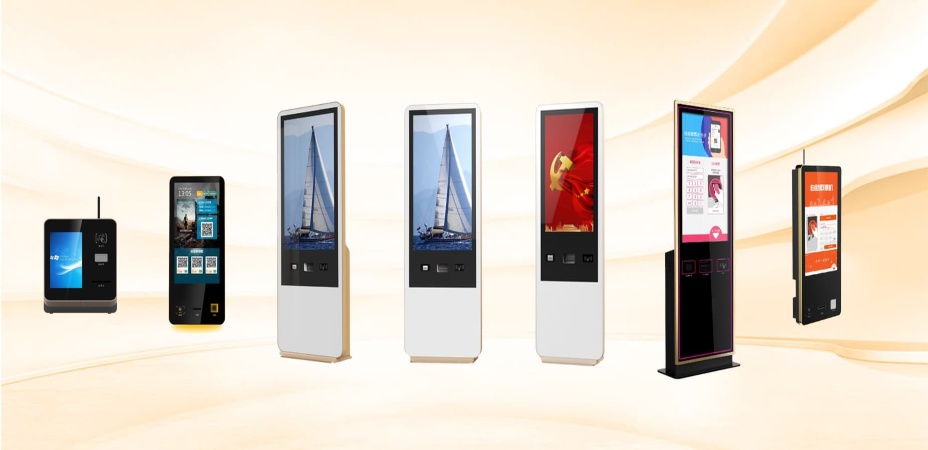
Types of Cinema Kiosk
Ticketing Kiosk
Ticketing kiosk is the most common type of movie theater kiosk, allowing customers to purchase and print tickets without waiting in line. These kiosks expedite the ticket-buying process and help manage crowds, especially during busy movie premieres.
Food & Beverage Kiosk
These kiosks enable customers to order snacks and drinks without waiting at the concession stand. They offer customizable options, allowing users to quickly select their favorite items, from popcorn to meal combos, enhancing convenience during peak times.
Combo Kiosk
Combo kiosk provides an all-in-one solution by combining ticket purchasing and food ordering in a single machine. This versatile approach maximizes convenience for both customers and theaters, reducing congestion and improving service flow.
Sizes and Style of Cinema Kiosk
| Size (Inches) | Style | Screen Type | Recommended Application |
|---|
| 24" | Wall-mounted Kiosk | Touchscreen LCD | Small theaters, limited space |
| 27" | Free-standing Kiosk | Touchscreen LCD | Standard movie theaters |
| 32" | Dual-screen Kiosk | Interactive LCD | High-traffic cinemas |
| 43" | Self-service Ticketing | Infrared Touch | Multiplex & premium cinemas |
| 55" | Digital Poster Kiosk | High-brightness LCD | Advertising & information display |
Installation and Usage Guide for Cinema Kiosk
| Step | Description |
|---|
| Unpacking | Carefully remove the kiosk from packaging, check for damages. |
| Positioning | Place the kiosk in a secure location with power and network access. |
| Power Connection | Connect the kiosk to a power source and ensure proper voltage supply. |
| Network Setup | Connect via LAN or Wi-Fi for real-time data updates. |
| Software Configuration | Install and configure the ticketing/payment system software. |
| Payment Integration | Test QR code, NFC, and card payment options. |
| User Interface Test | Ensure the touchscreen, ticket printer, and scanners are functioning correctly. |
| Final Inspection | Run system diagnostics and confirm smooth operation before customer use. |
After-Sales and Technical Support for Cinema Kiosk
| Support Service | Details |
|---|
| Warranty | 1-3 years standard warranty for hardware. |
| Remote Assistance | 24/7 online technical support via email, chat, or call. |
| On-Site Maintenance | Available for major repairs or hardware issues. |
| Software Updates | Regular updates to improve kiosk performance and security. |
| Spare Parts | Quick replacement for essential components (printers, screens, card readers). |
| Training | Guidance for staff on kiosk operation and troubleshooting. |
| Customization Support | Assistance in modifying software or hardware per business needs. |
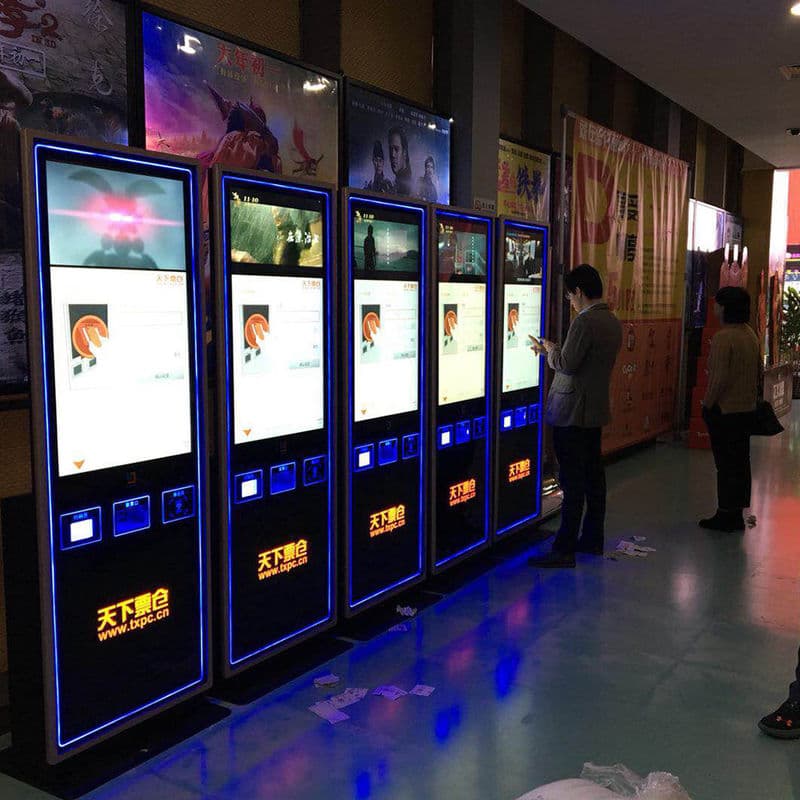
Benefits of Cinema Kiosk for Movie Theaters and Customers
The adoption of cinema kiosks delivers numerous advantages to both movie theaters and their patrons:
For Cinema and Movie theater:
Increased Efficiency: By automating ticket and concession sales, theaters can operate more efficiently, freeing up staff to focus on other critical customer service tasks.
Cost Savings: Movie theater kiosks reduce staffing needs for routine tasks, leading to lower labor costs.
Upselling Opportunities: Kiosks can suggest additional purchases, such as upgrading drinks or adding snacks, boosting per-customer spending.
For Customers and users:
Convenience: Customers can bypass long lines and quickly buy tickets or snacks, particularly useful during busy periods.
Faster Transactions: Kiosks process purchases faster, reducing wait times and enhancing the overall movie-going experience.
Personalization: Many cinema kiosks are integrated with loyalty programs, allowing customers to receive personalized promotions and rewards.
Key Features of Modern Cinema Kiosk
Modern cinema kiosks are equipped with advanced features designed to enhance functionality and user experience:
Touchscreen Interfaces: High-resolution, responsive touchscreens make the interaction seamless, even for more complex transactions like seat selection or customizing food orders.
Self-Service Ticketing: Customers can buy tickets, select seats, and print receipts instantly.
Multiple Payment Options: These kiosks support various payment methods, including cash, credit/debit cards, NFC payments like Apple Pay and Google Pay, and QR code scanning.
Accessibility Features: Many kiosks offer multi-language support, audio guidance, and ADA-compliant designs to accommodate all customers, ensuring inclusivity.
Industrial-Grade Hardware: Equipped with dual-core to i7 CPUs, 2GB-8GB RAM, and high-speed printers for smooth performance.
Customizable Design: Available in different enclosure thicknesses (1.5mm or 3.0mm), with color and branding options.
Secure & Durable: Built with anti-dust, anti-vandal, and moisture-proof materials for longevity.
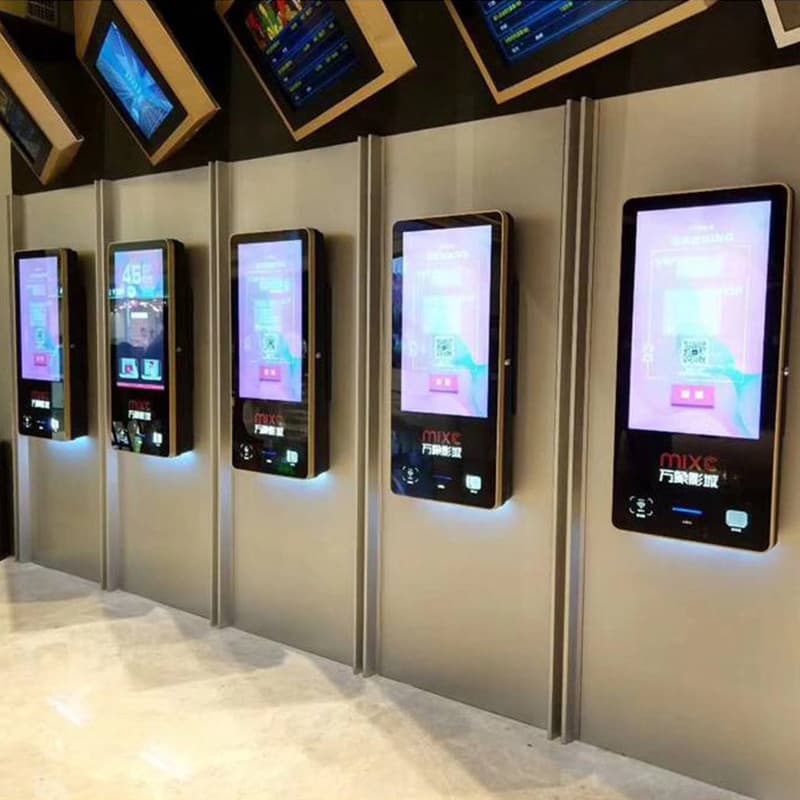
How a Cinema Kiosk Improves Business Operations
Cinema kiosks not only provide convenience but also deliver significant operational benefits:
Automated Ticketing & Faster Service: By enabling customers to purchase tickets independently, cinema kiosks reduce wait times during peak hours, ensuring a smoother and more efficient ticketing process. This helps theaters increase seat occupancy rates by facilitating timely ticket purchases.
Streamlined Operations: Automating tasks like ticket sales, seat selection, and concession orders minimizes human error, enhances efficiency, and ensures a consistent quality of service.
Multiple Payment Options: The kiosk supports various automated payment methods, including credit cards, QR codes, NFC payments, and cash, eliminating the need for manual transactions and speeding up the purchasing process.
Real-Time Data Syncing: Kiosks update in real time, reflecting the latest showtimes, seat availability, and inventory, ensuring customers always have accurate and up-to-date information.
Lower Labor Costs: By automating seat selection and payments, the kiosk reduces dependency on staff, allowing theater operators to allocate resources more efficiently and cut operational costs.
Valuable Data Insights: Kiosks collect customer preferences and purchasing behavior data, enabling theaters to optimize marketing strategies, improve promotions, and enhance overall customer satisfaction.
Challenges and Considerations in Cinema Kiosk Implementation
While cinema kiosks provide numerous advantages, their implementation comes with several challenges that require careful planning and strategic management:
Initial Investment and ROI Calculation
The upfront cost of cinema kiosks includes hardware procurement, software integration, and payment processing setup. For smaller theaters, this investment might seem substantial. However, an in-depth ROI analysis should consider labor savings, increased ticket and concession sales, and faster service efficiency. The adoption of modular designs and scalable software solutions can help theaters gradually expand their self-service infrastructure while controlling costs.
Hardware and Software Maintenance
Regular maintenance is crucial for uninterrupted operation. Hardware components, such as touchscreens, receipt printers, and payment terminals, require periodic servicing to prevent failures. Software updates must ensure compatibility with evolving ticketing systems, payment gateways, and security protocols. Implementing a proactive maintenance schedule, remote diagnostics, and automatic updates can minimize downtime and optimize performance.
User Experience and Adoption Barriers
While digital kiosks streamline ticketing and concessions, not all customers—especially older demographics—may be familiar with self-service technology. A user-friendly UI with intuitive navigation, multilingual support, and clear visual instructions is critical to improving accessibility. Additionally, hybrid staffing strategies, where staff are available to assist customers during peak hours or transition phases, can bridge the gap between traditional and self-service experiences.
Network Connectivity and Data Security
A seamless real-time data sync between kiosks, central servers, and online booking platforms is essential to avoid issues such as double bookings or outdated showtime information. Strong cybersecurity measures—including encrypted transactions, secure user authentication, and compliance with PCI DSS standards—must be enforced to protect sensitive customer and payment data.
Customization for Business Needs
The effectiveness of a cinema kiosk depends on how well it aligns with the specific operational needs of a theater. Customizable software options for ticketing, promotions, loyalty programs, and payment methods (QR codes, NFC, credit cards, mobile wallets) ensure that the kiosk integrates seamlessly into the existing ecosystem while enhancing customer satisfaction.
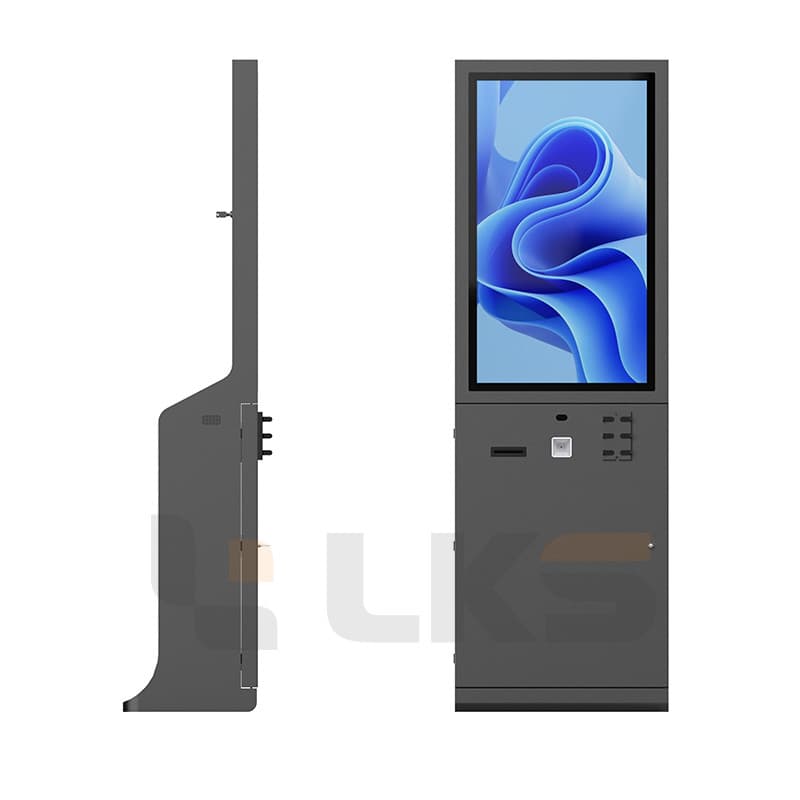
Future Trends in Cinema Kiosk Technology
Cinema kiosks are rapidly evolving with advancements in AI, automation, and connectivity. The following trends will shape the future of self-service kiosks in theaters:
AI-Powered Personalization and Predictive Analytics
Artificial Intelligence (AI) will enhance customer engagement by analyzing user preferences and purchasing patterns. Kiosks will recommend movies based on past ticket purchases, suggest combo meal deals tailored to previous orders, and even offer dynamic pricing strategies based on demand forecasting. Machine learning algorithms will further optimize advertising content displayed on kiosk screens, maximizing concession sales.
Mobile and IoT Integration for Seamless Omnichannel Experience
Future cinema kiosks will offer full mobile integration, allowing customers to reserve tickets, pre-order snacks, or select seats via their smartphones. IoT-enabled kiosks will sync with mobile apps and digital wallets, enabling a seamless check-in process through QR code scanning or NFC tap-and-go functionality. This level of connectivity will significantly reduce transaction times and enhance convenience.
Sustainability Initiatives: Eco-Friendly and Paperless Transactions
The push for environmentally friendly solutions will drive cinemas to adopt paperless ticketing and digital receipts, reducing waste and operational costs. Kiosks equipped with e-ticket QR code scanners and mobile wallet integration will eliminate the need for printed tickets, contributing to sustainability efforts while improving efficiency.
Advanced Biometric Authentication for Secure Transactions
The incorporation of biometric authentication, such as facial recognition or fingerprint scanning, will enhance security and convenience. Customers will be able to log into loyalty accounts, access personalized discounts, or even complete transactions with biometric verification, eliminating the need for physical cards or PINs.
Cloud-Based Remote Management and AI Predictive Maintenance
Cloud-based platforms will allow theater operators to manage multiple kiosks remotely, updating software, pricing, and movie listings in real time. AI-driven predictive maintenance will analyze kiosk performance and detect potential hardware failures before they occur, ensuring maximum uptime and reducing operational disruptions.
Cinema Kiosk Market Analysis and LKS's Strategic Deployment for 2025
The global kiosk market is experiencing significant growth, driven by increasing consumer demand for self-service solutions across various sectors, including the cinema industry. In 2024, the market was valued at USD 30.12 billion and is projected to reach USD 86.39 billion by 2033, reflecting a compound annual growth rate (CAGR) of 12.42%. This upward trend is attributed to advancements in technology, such as touchless interfaces and AI integration, enhancing user experiences and operational efficiency.
LKS's Strategic Initiatives and Technological Focus for 2025
As a leading provider of self-service kiosk solutions, LKS offers a diverse range of cinema kiosks, including wall-mounted models in 24, 27, 32, and 43-inch sizes. These kiosks support multiple payment methods, such as NFC, EMV, cash, credit cards, and QR codes, catering to varied customer preferences. In response to the evolving market landscape, LKS has outlined the following strategic initiatives and technological focuses for 2025:
Technological Innovation and Product Enhancement: LKS is committed to continuous research and development to improve kiosk performance and user experience. By incorporating artificial intelligence and machine learning, LKS aims to offer personalized recommendations and intelligent interactions, thereby elevating the movie-going experience.
Market Expansion and Partnerships: Building upon its established presence, LKS plans to penetrate emerging markets and forge strategic alliances with cinema operators worldwide. This approach is designed to increase market share and deliver tailored solutions that meet the unique needs of diverse regions.
Sustainability Initiatives: In alignment with global sustainability efforts, LKS is developing eco-friendly kiosks that utilize energy-efficient materials and designs. By promoting digital ticketing and paperless transactions, LKS contributes to reducing the environmental footprint of cinema operations.
Enhanced Customer Support and Service Optimization: LKS is dedicated to providing comprehensive technical support and after-sales services, ensuring seamless installation, maintenance, and operation of its kiosks. This commitment aims to enhance customer satisfaction and foster long-term loyalty.
Call to Action
Are you ready to upgrade your cinema and movie theater with the modern high quality cinema kiosk? Contact LKS Kiosk today to explore how our cutting-edge cinema kiosk solutions can elevate your cinema's customer experience and operational efficiency.






